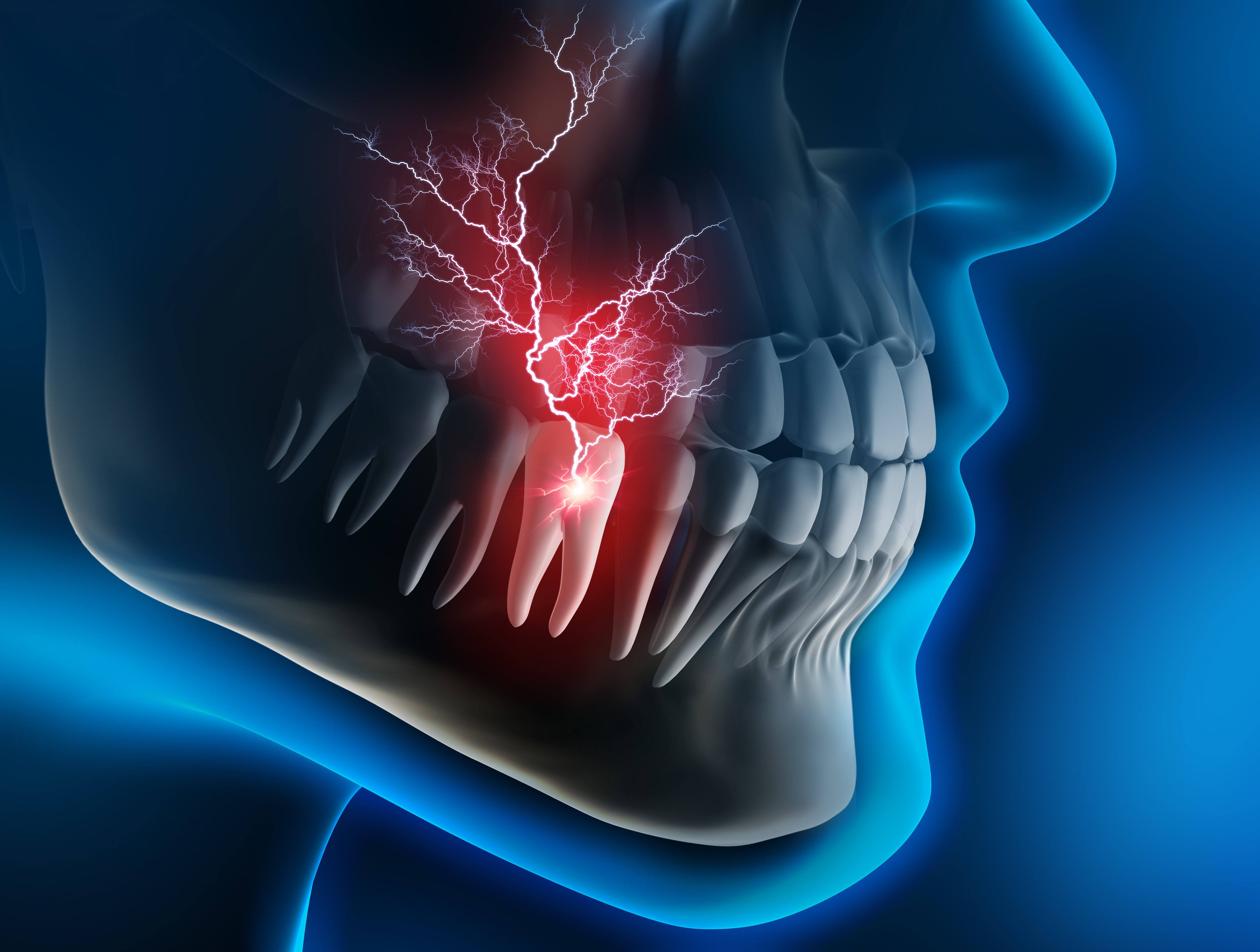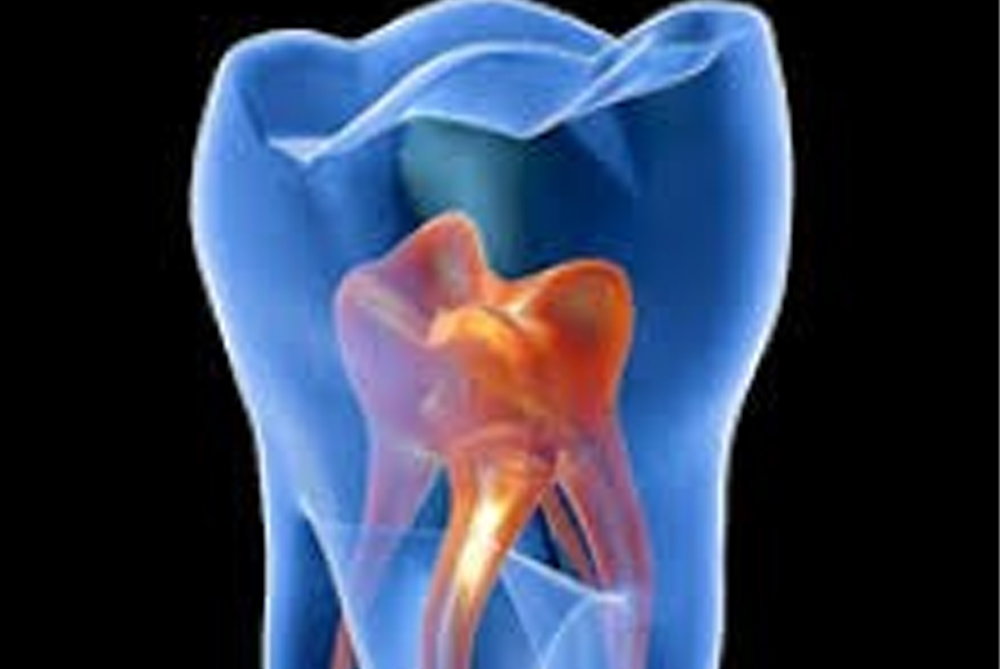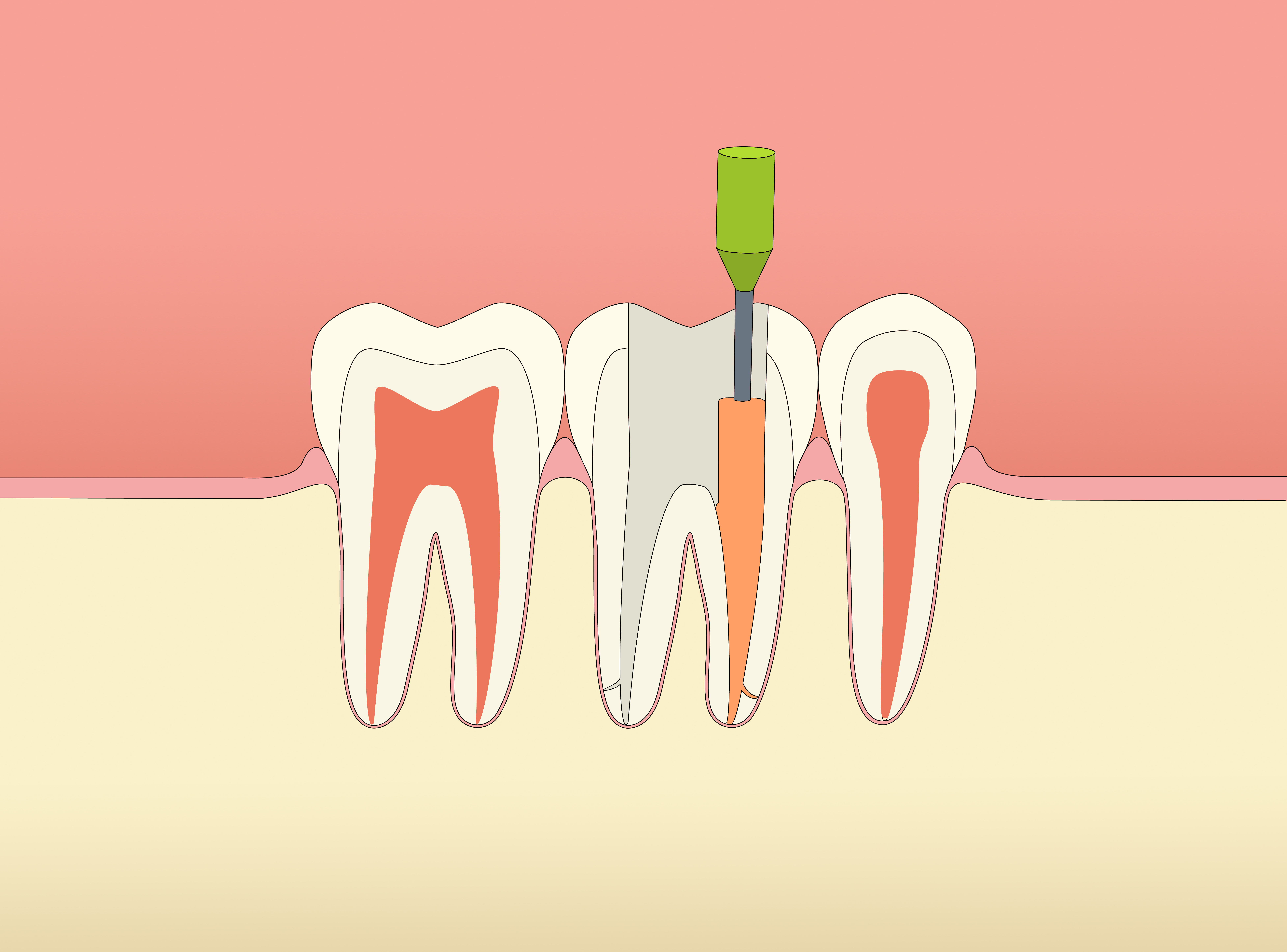ROOT CANAL
Root canal treatment, commonly known as "killing the nerve" is a procedure to remove the affected pulp from a damaged or dead tooth and to seal the canal.

WHAT IS A ROOT CANAL?
Root canal treatment, commonly known as “killing the nerve” is a procedure to remove the affected pulp from a damaged or dead tooth and to seal the canal. The pulp is the deep part of the tooth and contains blood vessels and nerves. It is located in the central part of the root and connects the tooth with the jawbone.
CAUSES:
In most cases root canal treatments must be performed due to cavities that evolve and reach the nerve, causing pain and the well-known dental phlegmon.
Other times it may be caused by trauma, an accident or tooth impact that causes a fracture or a crack that affects the nerve. However, this is happening less and less, as the entire discipline of dentistry is evolving towards a much less invasive treatment. Root canals are often performed before placing a ceramic crown on a tooth, as the nerve cannot withstand the drilling prior to fitting the crown. This is known as a root canal for prosthetic purposes and is done with modern metal-free ceramics that require much less space to achieve an attractive finish.
TYPES OF ROOT CANAL TREATMEN
SINGLE ROOT
When it affects a tooth that has only one root and therefore only one root canal. Mostly incisors.
DOUBLE ROOT
A root canal treatment is double root when it affects a tooth that has two roots and therefore two root canals. Mostly premolars.
MULTI ROOT
When it affects a tooth that has more than two roots and therefore several root canals. Molars.
SYMPTOMS
The tooth loses its colour, darkens or causes pain when a tooth with cavities is stimulated with hot and cold. There may be a history of trauma to the tooth, or restoration may have been performed from which the tooth does not recover. There is often no pain, particularly when the cavity has already irreversibly affected the pulp (pulp necrosis).
THE PROCESS
A review of dental records and a preliminary examination including x-rays; the appropriate positioning of the patient and the professional; the use of a correct technique and sterilisation measures are essential standards for performing a root canal treatment. A preliminary x-ray is necessary in all cases.
First of all, the necessary anaesthetic is given, the operating field is prepared, and the tooth is isolated. The tooth is opened as little as possible to expose the root canal and the damaged pulp. The pulp tissue is removed, and the root canal is cleaned and widened using appropriate instruments and material. The canal is then sealed perfectly with a thermoplastic material (gutta-percha) and cement. Control x-rays may be necessary during the different steps. This prepares the tooth to be restored. Teeth that have undergone a root canal treatment may require a crown to be fitted for aesthetic and functional purposes.


BENEFITS AND ADVANTAGES
- It avoids the extraction of a natural tooth.
- It eliminates dental infections and consequences such as halitosis.
- It prevents the loss of the bone that supports the tooth.
- It prevents the adjacent teeth from moving and shifting.
- It avoids more costly dental treatments. Root canals are the treatment that generates most conflict in dental clinics. Although it is an essential step to ensure the survival of a tooth once it is diseased and to allow it to remain in the mouth, it is not a lifelong treatment and leads to a number of failures and late secondary infections. This certainly does not mean that the treatment is not recommended, but you must be aware that it should be checked over time to know when it has fulfilled its mission.
TRY US OUT
THE FIRST APPOINTMENT IS FREE. GET AN APPOINTMENT:952 58 36 83.
If you prefer, you can complete the form and we will contact you.
